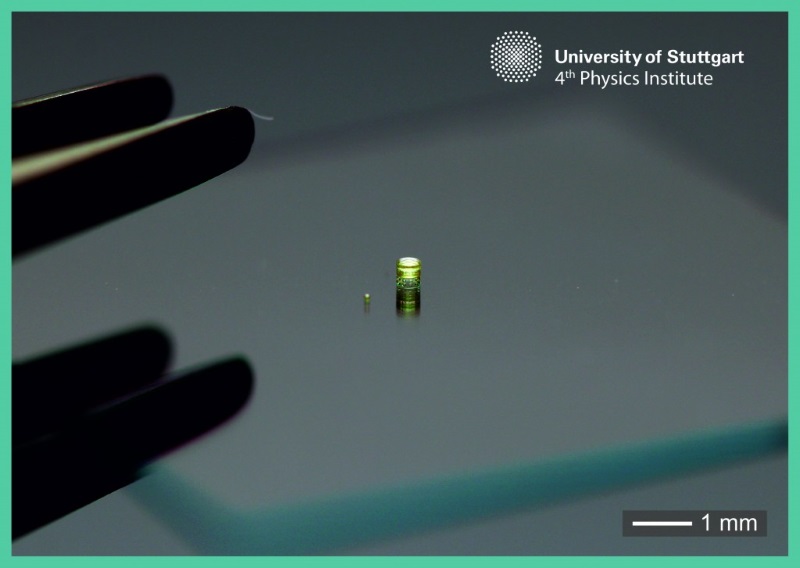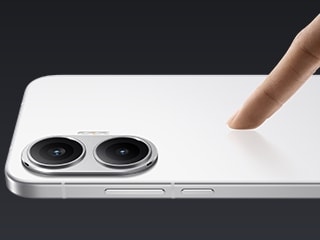- Home
- Cameras
- Cameras News
- Micro Camera Can Be Injected With a Syringe: Study
Micro-Camera Can Be Injected With a Syringe: Study

Using 3D printing, researchers from the University of Stuttgart built a three-lens camera, and fit it onto the end of an optical fibre the width of two hairs.
Such technology could be used as minimally-intrusive endoscopes for exploring inside the human body, the engineers reported in the journal Nature Photonics.
It could also be deployed in virtually invisible security monitors, or mini-robots with "autonomous vision".
3D printing also known as additive manufacturing makes three-dimensional objects by depositing layer after layer of materials such as plastic, metal or ceramic.
Due to manufacturing limitations, lenses cannot currently be made small enough for key uses in the medical field, said the team, which believe its 3D printing method may represent "a paradigm shift".
It took only a few hours to design, manufacture and test the tiny eye, which yielded "high optical performances and tremendous compactness," the researchers reported.
The compound lens is just 100 micrometres (0.1 millimetres or 0.004 inches) wide, and 120 micrometres with its casing.
It can focus on images from a distance of 3.0 mm, and relay them over the length of a 1.7-metre (5.6-foot) optical fibre to which it is attached.
The "imaging system" fits comfortably inside a standard syringe needle, said the team, allowing for delivery into a human organ, or even the brain.
"Endoscopic applications will allow for non-invasive and non-destructive examination of small objects in the medical as well as the industrial sector," they wrote.
The compound lense can also be printed onto image sensor other than optical fibres, such as those used in digital cameras.
Catch the latest from the Consumer Electronics Show on Gadgets 360, at our CES 2026 hub.
Related Stories
- Samsung Galaxy Unpacked 2025
- ChatGPT
- Redmi Note 14 Pro+
- iPhone 16
- Apple Vision Pro
- Oneplus 12
- OnePlus Nord CE 3 Lite 5G
- iPhone 13
- Xiaomi 14 Pro
- Oppo Find N3
- Tecno Spark Go (2023)
- Realme V30
- Best Phones Under 25000
- Samsung Galaxy S24 Series
- Cryptocurrency
- iQoo 12
- Samsung Galaxy S24 Ultra
- Giottus
- Samsung Galaxy Z Flip 5
- Apple 'Scary Fast'
- Housefull 5
- GoPro Hero 12 Black Review
- Invincible Season 2
- JioGlass
- HD Ready TV
- Laptop Under 50000
- Smartwatch Under 10000
- Latest Mobile Phones
- Compare Phones
- OPPO Reno 15 Pro Max
- Honor Win RT
- Honor Win
- Xiaomi 17 Ultra Leica Edition
- Xiaomi 17 Ultra
- Huawei Nova 15
- Huawei Nova 15 Pro
- Huawei Nova 15 Ultra
- Asus ProArt P16
- MacBook Pro 14-inch (M5, 2025)
- OPPO Pad Air 5
- Huawei MatePad 11.5 (2026)
- Xiaomi Watch 5
- Huawei Watch 10th Anniversary Edition
- Acerpure Nitro Z Series 100-inch QLED TV
- Samsung 43 Inch LED Ultra HD (4K) Smart TV (UA43UE81AFULXL)
- Asus ROG Ally
- Nintendo Switch Lite
- Haier 1.6 Ton 5 Star Inverter Split AC (HSU19G-MZAID5BN-INV)
- Haier 1.6 Ton 5 Star Inverter Split AC (HSU19G-MZAIM5BN-INV)

















